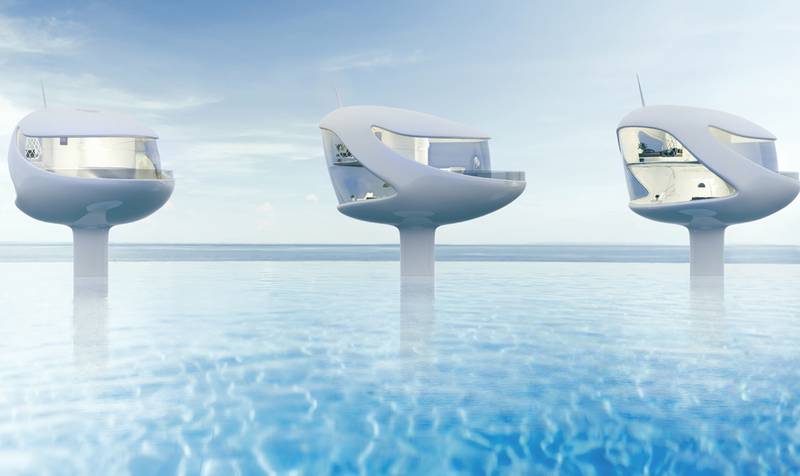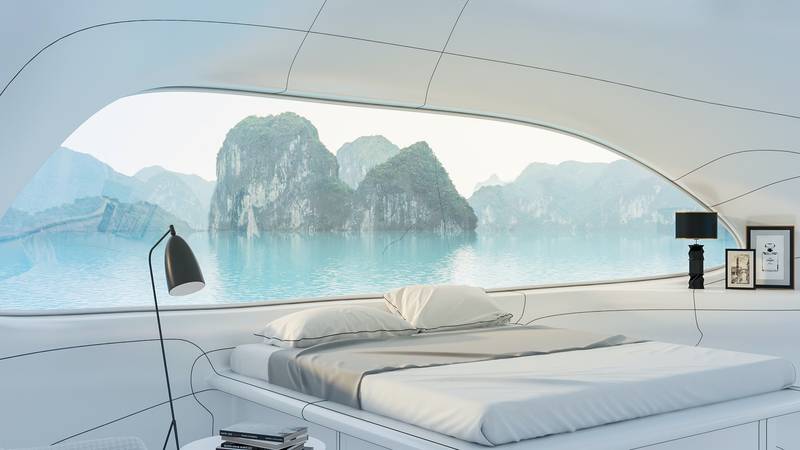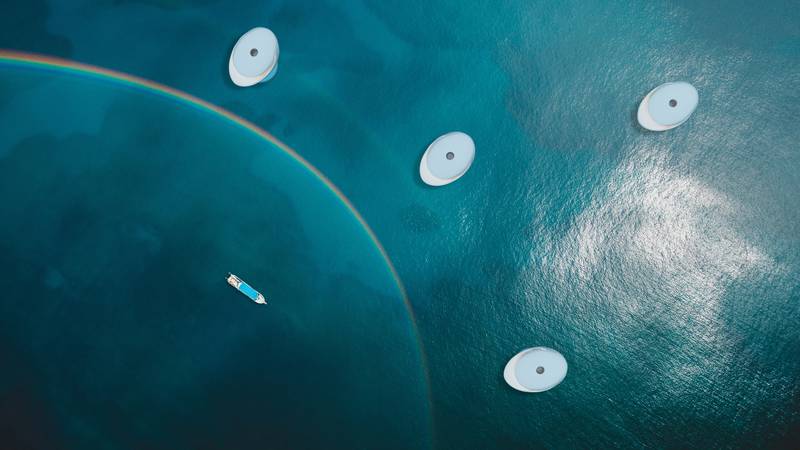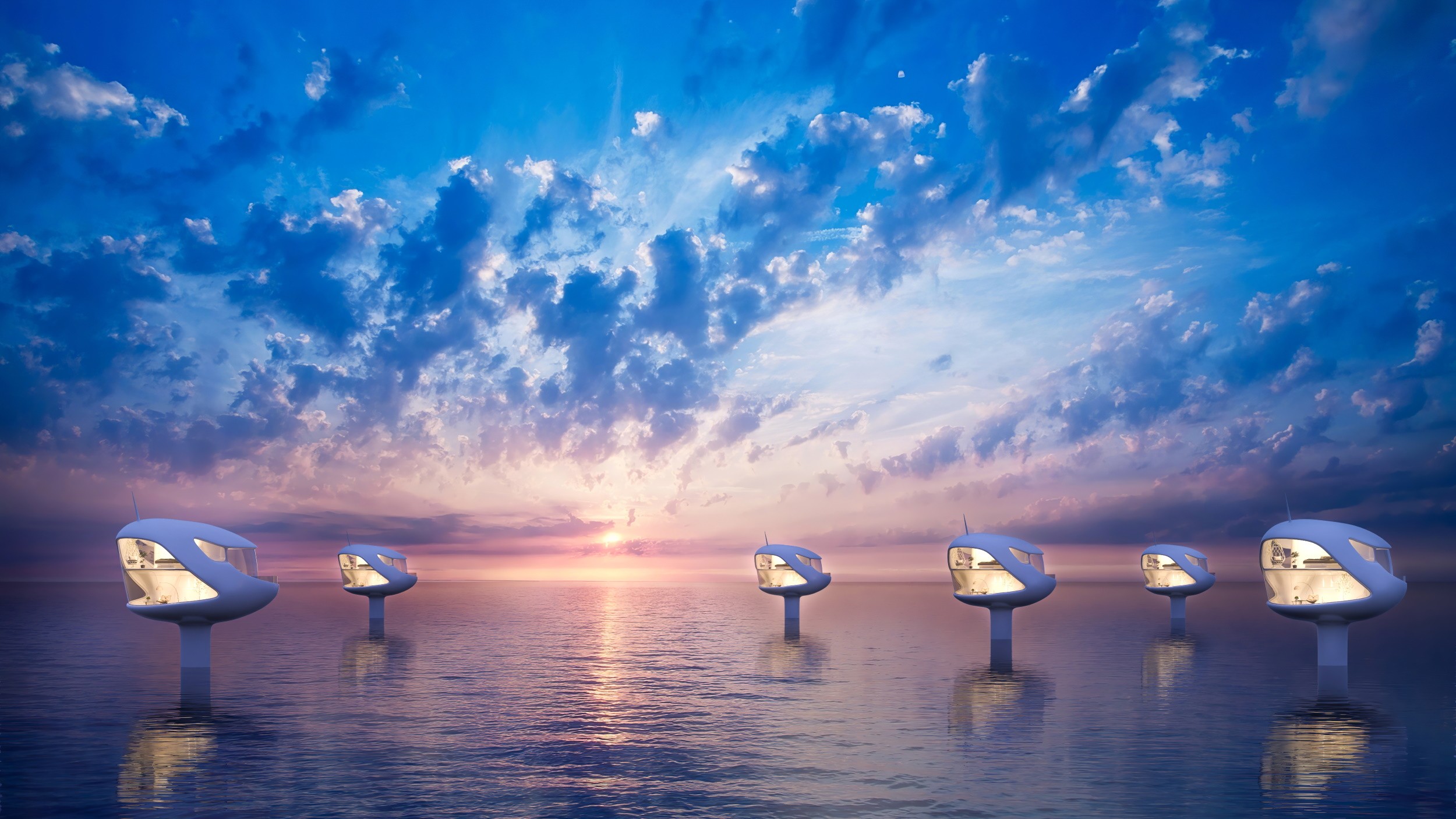Panama will be home to the world's first floating SeaPods community, with the newly launched vessel currently in the water at Linton Bay Marina in Colon.
Designed by Dutch architect Koen Olthius, these aquatic houses are expected to bring green living spaces out to the distant sea, opening up new limits for human habitation while solving the problem of real estate shortage along the coast.

These aquatic houses are expected to bring green living space to the distant ocean.
Each SeaPods unit is built on a single structure that rises nearly 8 feet above sea level thanks to a system of air-filled tubes that power the floating structure. Each apartment has three floors of living space, including a bedroom, living room, kitchen, and bathroom.
With a total floor area of up to 77 m2for interior space with window area of 53 m2, each Seapods features an impressive balcony offering majestic panoramic views and a vibrant ocean experience.
CEO Grant Romundt hopes the design will challenge perceptions of housing and tourism, as well as allowing people to live on the water without having to sacrifice when it comes to "the luxuries of modern life".

Master bedroom with stunning ocean view
“Usually when you live on the water, it’s on a boat, which is an unacceptable living situation for most people,” he told CNN. “So we designed a floating house that gives you the experience of living on land, but even more so.”
Inside each of these oceanfront apartments will be equipped with smart devices that allow owners to control everything from turning on lights, locking doors, and even controlling the water pressure in the shower with just a wave of their hand.
If you’re wondering whether you’ll need to take a boat to shore every day to get food and supplies, don’t worry. Food, supplies, luggage, and furniture will be delivered to residents’ homes via drones and autonomous vehicles.

SeaPods are designed so that each one can act as a new habitat for marine life.
Initially, the Pods will be located in an area near Linton Bay Marina, but the Ocean Builders team hopes to roll them out globally as they believe the technology can be supported elsewhere.
According to Romundt, the drones will be used to deliver items like food and medicine, as well as “smaller everyday items.” For larger deliveries, there will be a separate autonomous vessel that will also act as an ocean recycling vessel, collecting trash and debris to keep the surrounding area clean.
Residents and visitors can be shuttled to and from the SeaPods via dinghy, jet skis, local water taxi, or their own boat or vessel. And while they certainly seem geared toward those with a more minimalist approach, there’s still 1,250 square feet of storage space inside.
With a focus on sustainability, the Pod was conceived to “benefit the surrounding environment” and provide “a natural habitat for ocean life to live and thrive”.

Each Seapods features an impressive balcony offering majestic panoramic views and a vibrant ocean experience.
If you’re wondering whether you’ll need to take a boat to shore every day to get food and supplies, don’t worry. Food, supplies, luggage, and furniture will be delivered to residents’ homes via drones and autonomous vehicles.
Ocean Builders claims that their sea homes are also ecologically restorative. A natural habitat for marine life is also built under each SeaPod. The house provides shade for barnacles and coral to grow, ensuring that while you get a cool new home, so do the fish in the sea.
The first home in the project will be located in Panama in the first year. Ocean Builders will then expand the project to other ocean communities.
Prices are set to start from $295,000 to $1.5 million per SeaPod, depending on configuration. The first 100 units are expected to be operational next year, with the number expected to increase to 1,000 by 2024.


































